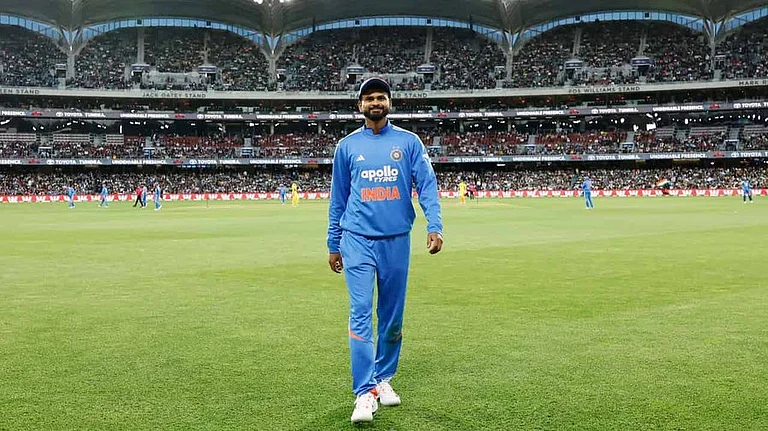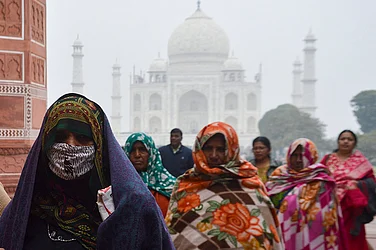The Bihar government on October 2, on the occasion of Gandhi Jayanti, released the Bihar Caste Survey’s findings. Then, last week, the state government increased the caste quota for jobs from 50 per cent to 65 per cent. These developments have put caste at the centre of national politics and it is expected to become a huge issue in the 2024 general elections as the INDIA coalition has called for a nationwide caste census. But the question is whether the issue of other backward classes (OBCs) would be bigger than the issue of tribals in the tribal-dominated areas.
The reservation bill in Bihar increased the extent of caste-based reservation in the state from 50 per cent to 65 per cent. If the bill becomes law, the 10 per cent reservation for the Economically Weaker Section (EWS) will also be added to it and the total reservation will be 75 per cent.
In the caste survey data released by the Bihar government a month ago, the population of Other Backward Classes (OBCs) and Extremely Backward Classes (EBCs) was more than 63 per cent, while the Scheduled Caste population was 19.65 per cent, General (unreserved) 15.52 per cent and Scheduled Tribe 1.68 per cent.
Since then, the politics of forward and backwards has once again been at the centre of national politics and is expected to become a huge issue in the general elections. But the question is whether, in the tribal-dominated states, the issue of OBCs will be bigger than that of tribals. Senior journalist Sunil Kumar believes that the question of tribal representation does not enjoy the kind of prominence at the national level that the OBC question does after the caste census in Bihar.
He says, “It seems that the tribal issue will remain local, limited to the states only. Because the INDIA alliance did not make it a national issue in the same way as is seen with the OBC issue today. I would say that neither the INDIA alliance nor the NDA alliance has raised the tribal issue to national prominence. The truth is that the issue can also not become a national issue as easily as the way OBC and Hindutva have become.”
Several major leaders of the Congress, including Rahul Gandhi, have said that a caste-based survey will be conducted in whichever state a Congress or Congress coalition government is formed. The Congress government of Chhattisgarh has even made it a part of its manifesto. Similarly, Jharkhand Parliamentary Affairs Minister Alamgir Alam has stated that the caste census will be the main issue for his party and its allies in both the general elections and the assembly elections to be held in Jharkhand next year. Both these states are tribal-dominated.
Status of OBC reservation in tribal-dominated states
According to the 2011 census, the tribals constitute 26.2 per cent of Jharkhand’s total population of 3.29 crores. Although there is no government data on the OBC population here, many organisations including the Commission for Backward Classes have been citing their population as 50 per cent or more. They have also been demanding an increase in the OBC reservation limit. At present, the OBCs have 14 per cent reservation in the state, while the STs have 26 per cent and the Dalits 10 per cent.
Even though the OBCs form the largest section of the population here, as they do in Bihar, as far as reservations and politics are concerned, the tribals have remained at the centre-stage. However, since the caste survey in Bihar, the issues of caste survey and OBC reservation have gained momentum in Jharkhand too.
Jharkhand is governed by an alliance of Jharkhand Mukti Morcha and Congress. Many Congress ministers and leaders have called for a caste census in the state. Jharkhand Parliamentary Affairs Minister Alamgir Alam told Outlook, “Our election issue will be the caste census. We have a consensus view that there should be a caste census. And this will not undermine the interests of any particular caste. The survey will not only reveal the status of the OBCs, tribals, and Dalits, but also that of the forward castes, namely their populations and their economic, social and employment status.”
It cannot be denied that the advocacy for caste survey has made OBC politics important for all the parties in Jharkhand. Chief Minister Hemant Soren’s government has taken decisions even in the past with a view to wooing OBC voters. Last year, his government had made an attempt to double the OBC reservation, but that has yet to acquire legal status. Last year in November, the government had called a special session and passed a new reservation bill. This bill remained pending with the Governor for approval for several months. Later, Governor C.P. Radhakrishnan returned it to the government, recommending a legal review. Since then the bill has remained pending. According to the new provisions of this bill, reservation for OBCs was increased from 14 per cent to 27 per cent, for the STs from 26 per cent to 28 per cent, and for the SCs from 10 per cent to 12 per cent. This means that the total reservation was increased from 50 per cent to 67 per cent. If this had been implemented, with the addition of 10 per cent for the EWS, a total of 77 per cent reservation would have come into force in the state.
There may be a difference of only 2 per cent in the new reservation proposals brought by the governments in Bihar and Jharkhand, but the difference in the percentages of the hike in reservation for the OBCs is large. In Bihar, 43 per cent reservation has been proposed for a 63 per cent OBC population.
So will Jharkhand too modify reservation limits as per the share in the total population according to the caste survey? Senior journalist Rajendra Tiwari says, “The issue of forward and backwards has not been a big issue in this state. Rather, outsiders versus insiders has been a big issue here. As far as reservation is concerned, the challenge for the government is to implement the OBC Reservation Bill which it brought a year ago. And if caste surveys are conducted, then the issue of forward versus backwards will not gain much traction here. Because the general population is only 3.5 per cent. And if the Jharkhand government brings a reservation bill on the basis of a caste survey, then it has the example of the neighbouring state of Bihar to draw upon.”
How large is the OBC population?
Even in Chhattisgarh, it is the tribal population that is considered significant from a political point of view. In 2012, when the Bharatiya Janata Party (BJP) was in power, the Raman Singh government had amended a section of the Reservation Act 1994 to increase the scope of reservation in the state from 50 per cent to 58 per cent. The reservation quota for the STs was revised from 20 per cent up to 32 per cent while the SC reservation was brought down from 16 per cent to 12 per cent and the 14 per cent reservation for the OBCs was kept unchanged.
Seven years later, under a Congress term, Bhupesh Baghel announced the implementation of a new reservation system in August 2019. According to this, the OBC reservation was increased from 14 per cent to 27 per cent and the SC reservation was hiked by 1 per cent to 13 per cent, whereas the 32 per cent reservation for the STs was left as it was. Adding the 10 per cent EWS quota, the total provision for reservation in the state stood at 82 per cent. However, this decision of the Baghel government was challenged in the High Court of Chhattisgarh, which put a stay on it. Furthermore, in September 2022, the High Court also struck down the reservation policy implemented by the Raman Singh government. As per the court, the policy was implemented without any solid basis and violated the reservation ceiling of 50 per cent. Subsequently, the matter was taken up at the Supreme Court. Long caught in legal tussles, the issue was finally resolved on May 1, 2023, after the Supreme Court allowed the state government to reinstate the old system of 58 per cent reservation.
During the revision of the reservation system during their respective tenures, while the BJP gave preference to the tribals, the Congress focused more on the OBCs. According to the 2011 census, Chhattisgarh has a population of 2 crore 55 lakh. Of these, 32 per cent are tribals. According to the Quantifiable Data Commission constituted in 2019 for conducting the census of the Backward Classes, the OBCs form 41 per cent of the state’s 3.22 crore population.
Against the backdrop of these facts and circumstances, will the Congress party’s position in favour of conducting a caste census in Chhattisgarh include the provision of reservation for different sections in terms of their population? How challenging will this prove to be in a tribal-dominated state?
Alok Putul, a senior journalist who has covered Chhattisgarh for two and a half decades, says, “Rahul Gandhi has spoken about the caste census in his election rallies in Chhattisgarh and many other Congress leaders are doing so too. But the BJP has been silent on the issue. At the same time, Prime Minister Narendra Modi is trying to advance his political agenda by calling himself an OBC in the latest election rallies, as he did the last time around as well. After the caste census, the issue of OBC has come into focus here. A census like this will clarify many things vis-à-vis caste.”
Among the five states in which elections are underway, three are major tribal-dominated states of the Hindi belt. Apart from Chhattisgarh, this includes Madhya Pradesh and Rajasthan. As per the 2011 census, Madhya Pradesh has 21-22 per cent tribals out of a population of 7.25 crores. The number of OBCs is said to be around 50 per cent. Similarly, tribals make up 13-14 per cent of Rajasthan’s 6.85 crore population, whereas the OBC population is said to be over 50 per cent. Odisha is another of the tribal-dominated states with a 23 per cent tribal population out of a total of 4.25 crores. According to figures disclosed by the government recently, the OBC population of the state is more than 45 per cent. Madhya Pradesh is the largest state in the country in terms of tribal population.
The caste-related data of the above-mentioned states shows that it will be far from easy to devise and implement a new system of reservation on the basis of caste surveys. Chhattisgarh and Jharkhand are examples of states where the OBCs outnumber the tribals, but the latter enjoy twice the representation compared to the OBCs.



























